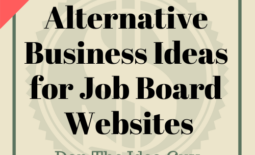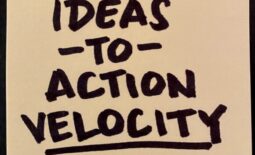The Opportunity Knocks Form
Back in the early days of my sales career (I sold printing services for a small company in Ohio) I quickly learned that no matter how good I believed an idea to be for a target client, there’s not much you can do when a prospect decides that it’s easier to say “no” than take advantage of your business proposal. That got me thinking about ways to encourage a prospect to seriously reconsider my offer.
Studies in decision-making have long determined that fear of making the wrong choice most often results in a person postponing the decision process for as long as possible — even if the delay causes greater anxiety than simply making any choice. The problem to solve then becomes “how do I make choosing my offer less of a risk than NOT choosing my offer?”
The cliché says “nobody every got fired for saying ‘no‘.”
I believe most prospects are under the impression that if they say “no” to an offer, that you’ll just go back to the office, file your proposal in a drawer and go home — they don’t seem to realize that even if THEY said “no,” someone will eventually say “yes.” To make them confront this reality, I created a piece of paperwork I call The Opportunity Knocks Form.
The purpose of the form was to make them painfully aware that if they opt not to invest in this proposal, I’d be taking it to a competitor — and people will “know” they passed up their original opportunity to participate. I used this form whenever a potential client passed on an idea that I wholeheartedly believed was perfect for them.
 The Opportunity Knocks Form is essentially a statement saying that the prospect has been presented with an idea and they have decided NOT act upon it.
The Opportunity Knocks Form is essentially a statement saying that the prospect has been presented with an idea and they have decided NOT act upon it.
The form included a brief description of the offer and an area explaining that although I’d given Mr. Prospect first shot at the concept, Mr. Prospect decided NOT to take advantage of the offer and this paperwork serves as notice that I’ll be presenting the idea to other companies.
I walked the prospect through the contents of the form, stressing that I wanted to make certain their company had first shot at this idea. I used similar situation stories that provided examples of earlier prospects that missed out on one of my proposals and how much of a positive impact it had for one of their competitors that decided to put the idea into action. I didn’t have to lie — all salespeople should have stories like this. If you don’t have any personal tales of success, use industry stories. Relate how much business is awarded to companies first to offer new products, etc. Make your stories relevant and powerful.
I chose not to include an area on my form for the prospect to sign their name (I couldn’t really force them to sign anyway.) I just included a description of the idea (a great way to get them to review the benefits of doing business one last time) and then I would sign and date the document. I found the form carried greater impact when printed on a two-part carbonless stock (hey, I worked in a print shop after all!) When I tore off the top sheet and gave it to the prospect (keeping the duplicate for myself) it made for a fantastic auditory component AND the prospect had to wonder who else is going to see that he said “no” to this opportunity.
The Opportunity Knocks Form forced the prospect to think about losing my concept to a competitor and their mind would rapidly race through worst-case scenarios about how successful the competitor might be if they implemented the idea — and how foolish they themself might appear for missing the chance to accept the offer first.
The prospect may also fear that if a competitor accepts your offer and is successful in implementing it, word may get back to his own supervisor that he had first shot at the idea. Nobody wants to miss out on something good and just knowing you’ll be presenting the concept to other people (especially their competitors) should be enough to make them pause and reconsider.
Why not try this technique yourself?
No one wants to miss-out on the next big thing. Making a prospect aware they may be passing up an idea that could easily be snatched-up by the next person to whom you present could be just the push needed to have them sign your contract instead of receiving a copy of your Opportunity Knocks Form.
Authors note:
I used this technique back in the 90’s while working in Columbus, Ohio. I was just reading “Small is the New Big” by Seth Godin (a collection of Seth’s articles and blog posts collected into a single volume) and learned of his story about Susan Storms who used a very similar technique. I was not aware of this story back when it was written, but reading about it made me dust-off and update this old article about my Opportunity Knocks Form. I suppose it’s another example of great minds thinking alike.



